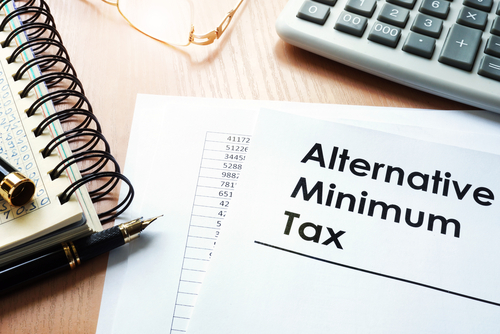Have you heard about recent AMT changes? Starting in 2024, more Canadians will be subject to AMT, making now the right time to re-evaluate your tax situation to find ways to save in the next year. In this article, we’ll cover what AMT is, the notable changes, and how you can lower your AMT bill each year.
What is AMT?
Alternative Minimum Tax, known as AMT, imposes a minimum level of tax on taxpayers who claim specific deductions, exemptions, and credits. This tax was introduced in 1986, but it is rarely used by most Canadians. The goal of AMT is to target high earners who leverage the tax system to reduce their taxable income to very low levels.
AMT is triggered if the amount of tax owed under the regular brackets is less than the AMT-calculated tax. Taxpayers will be required to pay this difference. However, if your tax liability from the regular brackets is higher than the AMT, you will not owe any additional amount.
Is AMT Changing?
AMT changes are expected to start on January 1, 2024. The first change is found in the AMT rate. The current rate is set to jump from 15% to 20.5%. This is a stark increase for high-income taxpayers who are subject to the additional tax. However, the CRA is increasing the exemption threshold from $40,000 to $173,000 to ensure lower-income taxpayers aren’t subject to the tax.
Another prevalent change is found in the allowable deductions. Employment expenses, moving expenses, interest, child-care expenses, limited partnership losses, and non-capital loss carryovers will now only be 50% deductible. Furthermore, only 50% of certain non-refundable credits are allowed, including the donation tax credit. Keep in mind that the dividend tax credit is already disallowed in the AMT calculation.
A further change is found in the treatment of capital gains. For regular tax purposes, only 50% of capital gains are included in income. Previously, AMT would include 80% of capital gains in the calculation. Beginning in 2024, 100% of capital gain income will be included in the AMT calculation and only 50% of carried forward losses are deductible.
How Can You Avoid AMT?
The lower deduction and credit thresholds will subject more Canadians to AMT, even with the higher exemption amount. The CRA estimates nearly $3 billion in revenues over a five-year period will be collected. Although AMT will be unavoidable for some high-income earners, you can still take a proactive approach to minimize your liability.
For one, you should create a tax plan with a qualified tax expert to find ways to properly time income and expenses for AMT purposes. You might find it’s more beneficial to defer your investment sales until next year. Next, you want to find ways to keep your adjusted gross income low. Maybe you decide to up your tax-free contributions to retirement accounts to lower your income base.
There isn’t a one-size-fits-all approach to reducing AMT, which is why consulting with the experts at NRK Accounting is beneficial. We can help you put together a personalized plan to lower your AMT following legislation changes. Contact one of our team members today to get started.

